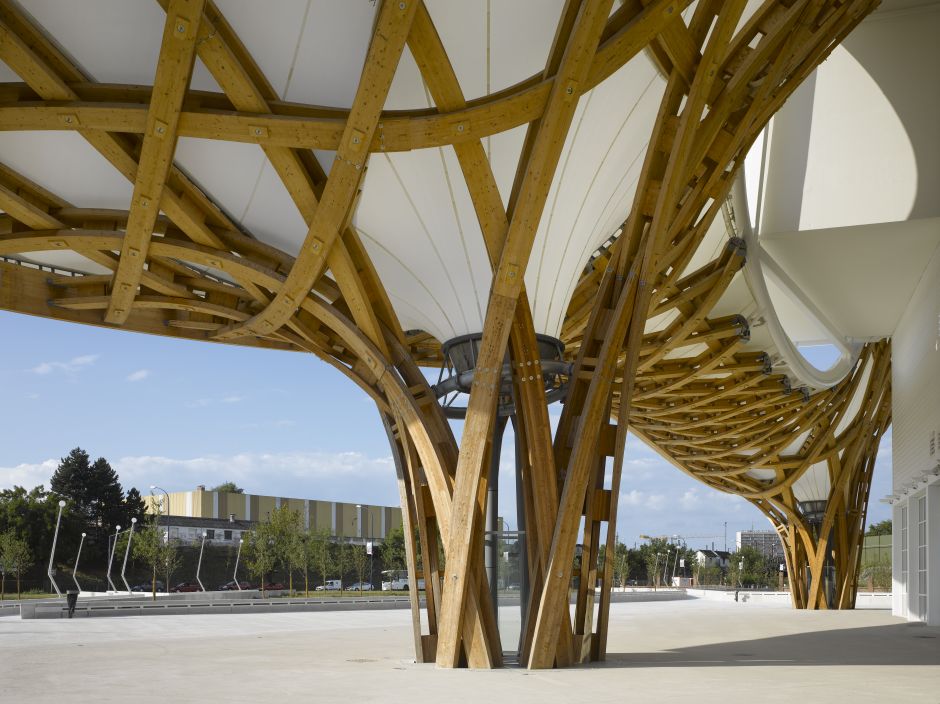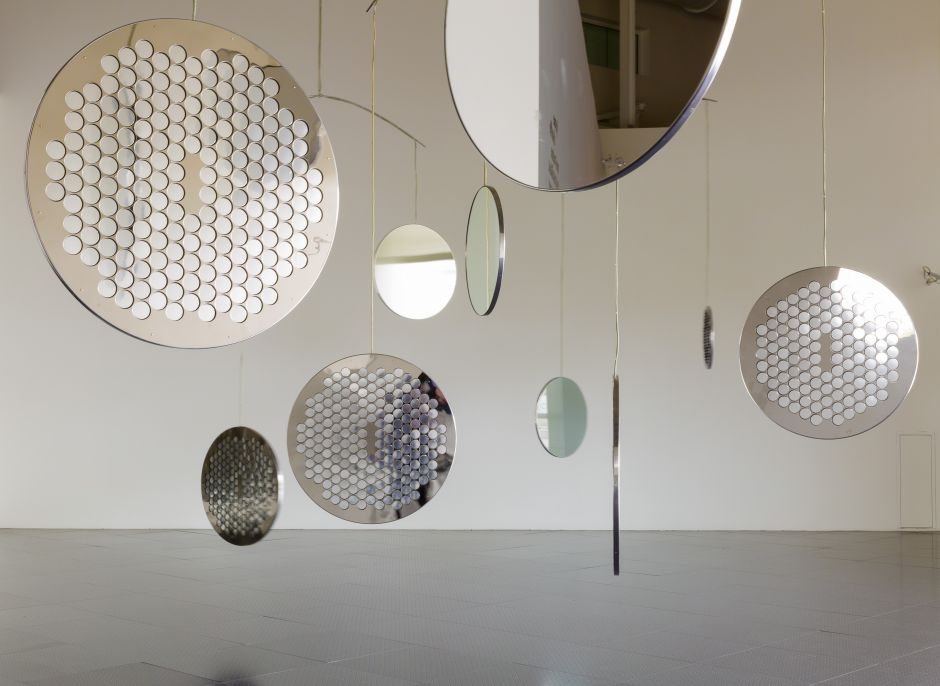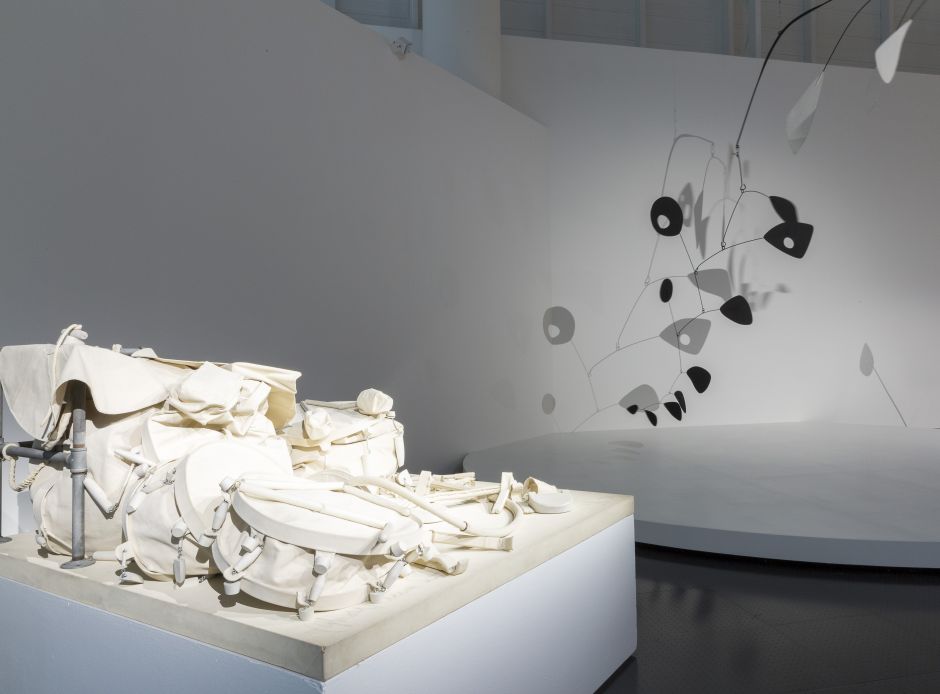The Centre Pompidou-Metz is a modern and contemporary art museum in Metz, France, a lovely city in Alsace, close to Luxembourg. The building’s iconic structure, designed by Shigeru Ban and Jean de Gastines, features curved, asymmetrical lines and a wooden roof that resembles a traditional Chinese hat. The Centre Pompidou-Metz, unlike the Centre Pompidou in Paris, does not have a permanent collection. Instead, it hosts temporary exhibitions showcasing artists and art movements worldwide, as you can learn from this article.
Table of Contents
The iconic architecture of the Centre Pompidou-Metz
The Centre Pompidou-Metz is a modern and contemporary art museum in Metz, France. The building, designed by Shigeru Ban and Jean de Gastines, is a unique and imposing structure with curved and asymmetrical lines that immediately capture the attention of anyone who approaches it.
One of the most striking features of this museum is its avant-garde structure, consisting of three main galleries, staggered and connected by a central corridor. The wooden roof is the most striking feature of the entire building, with a motif and shape reminiscent of a traditional Chinese hat.
The exhibition space is about 5,000 square metres and houses a vast collection of modern and contemporary art, an auditorium and an excellent café-restaurant where I recommend you stop at the end of your visit to enjoy amazing food in an iconic setting.

The roof of the Centre Pompidou-Metz
The roof of the Centre Pompidou-Metz is an architectural masterpiece. It has an irregular shape, with curves and counter-curves. A waterproof membrane made of fibreglass and Teflon constitutes the cover.
The roof is a hexagon with a diameter of 90 metres and a surface area of 8,000 square metres. It is made entirely of glued laminated timber, composed of hexagonal modules resembling the weave of a Chinese hat.
The lattice structure allows large spans of about 40 metres. It makes the roof a self-supporting element, resting on a few supports, called tulip poles by the architects. The wood used for the structure and the tulip poles comes from Germany.
The roof of the Centre Pompidou-Metz is an extraordinary example of how architecture can use technology and materials innovatively to create beautiful and functional structures. The roof is also an important symbolic element of the museum, representing its openness and connection to the outside world.
The Grande Nef, the Forum and the three Galleries
The building that houses the Centre Pompidou-Metz, designed by Shigeru Ban and Jean de Gastines, is distinguished not only by its iconic irregular roof but also by the spectacular Grande Nef hall, accessible from the Forum on the ground floor and by the three 80-metre-long galleries, in the shape of parallelepiped tubes, which overlap and intersect each other.
The Grande Nef is a monumental exhibition hall designed in concrete without internal support pillars. This feature offers great freedom in terms of exhibition design and artistic interventions. Its ends, with large windows projecting from the roof, are oriented towards some of Metz’s iconic buildings. Framing the cathedral, the railway station and the Parc de la Seille, they turn the view into real city postcards.
The three galleries of the Centre Pompidou-Metz are also very versatile exhibition spaces that accommodate a wide range of artworks, from sculptures to installations to video projections. Thanks to its unique architecture, the museum offers visitors a unique, immersive, engaging experience in the regularly changing temporary exhibitions.
The Wendel Auditorium, the Studio and the Forum
The Centre Pompidou-Metz is not just a modern and contemporary art museum but also houses an auditorium, a performance art studio and a forum. The Wendel Auditorium is a 144-seat hall that can be used for various cultural events, from film screenings to lectures to live performances.
The Studio is a 196-seat hall, or 300 standing, thanks to the retractable rows, dedicated to live performances, exhibitions and installations. The Forum is an ample multi-purpose space hosting various events, such as exhibitions, concerts, theatre performances and conferences.
All these spaces want to be extensions of the exhibition spaces and the outside world. For example, the retractable facades of the Forum open up in summer to create a continuum between the interior and exterior of the museum. In this way, the Centre Pompidou-Metz offers visitors a complete and immersive cultural experience beyond a simple museum visit.
The restaurant area
The Centre Pompidou-Metz also houses a café, a restaurant, a media area and a garden. The café on the ground floor opens onto a shaded terrace. In contrast, the first floor houses the restaurant where you can relax and enjoy a meal surrounded by art.
The gardens
Outside, there are two gardens and a forecourt. The forecourt, designed by Nicolas Michelin Associés and Paso Doble, provides a direct pedestrian link between the Centre Pompidou-Metz and the railway station and is the same size as the Centre Pompidou Square in Paris.
The Centre Pompidou-Metz’s north garden bears the same architects’ signature. It collects rainwater from the roof and the square in its two-hectare area planted with prunus. In contrast, the south garden is currently a private area.
Temporary Exhibitions at the Centre Pompidou-Metz
Compared to many other museums, the Centre Pompidou-Metz has no permanent collection. The exhibitions change regularly, and you might find something new every time you visit, so you should return periodically at least once a year.
Over the years, the Centre Pompidou-Metz has hosted some genuinely impressive and eclectic temporary exhibitions. Some have been so memorable that they have left a lasting impression in the minds of visitors. Musicircus, on the relationship between music and art, certainly made a lasting impression on me. Among the exhibits were a piano covered in wool that was impossible to play and a film of women covering themselves in paint and then painting a canvas with their bodies in time to the music.
Another vividly remembered exhibition was Jardin Infini, which transformed the traditional concept of the garden, presenting it as a timeless, out-of-space space. This exhibition featured various artwork, including classic garden designs and flower drawings, alongside more surprising works, such as foam pipes and modern sculptures. In recent years, the museum has also embraced digital art, demonstrating an ongoing interest in contemporary art in all its forms.

The Centre Pompidou-Metz with children
Although modern and contemporary art museums may seem difficult for children, visiting the Centre Pompidou-Metz is perfect if your children are intrigued by painting and sculpture. I saw this museum on my own because, at the moment, art is not one of my son’s main interests. Still, if you have children who speak French, I recommend signing them up for the ongoing workshops.
One of the objectives of the Centre Pompidou-Metz is to make contemporary art accessible to the broadest possible audience, including young visitors. That is why you can find several workshops linked to current exhibitions dedicated to children from 5 to 10 years old and designed to explore various contemporary art forms. During the school holidays, the workshops for children turn into actual three-day courses where young participants can discover all the stages of artistic creation.
Practical information for visiting the Centre Pompidou-Metz
The Centre Pompidou-Metz, located in Metz, France, is a major institution dedicated to modern and contemporary art. This museum, an extension of the famous Centre Pompidou in Paris, is a fascinating destination for art lovers, with regularly changing temporary exhibitions and unique architecture.
To make the most of your visit, I recommend visiting the museum’s website for information on current exhibitions and events. Take your time to enjoy the works of art on display; the Centre Pompidou-Metz is extensive.
Also, if you speak French and visit the museum with your family, it may be a good idea to attend current events or have your child participate in a children’s workshop. Last but not least, I recommend you to buy your tickets in advance online to avoid the queues at the entrance and directly access the temporary exhibitions.
Opening Hours and Tickets
The opening hours of the Centre Pompidou-Metz are from 10:00 am to 6:00 pm, closing on Tuesdays. Ticket prices vary depending on the type of admission, with open and timed tickets available from €7, with free admission for visitors under the age of 26.
To visit the Centre Pompidou-Metz from Luxembourg, a special offer for €23 includes return travel from any station in Luxembourg and admission to all temporary exhibitions.
How to get to Centre Pompidou-Metz
To get to the Centre Pompidou-Metz, you have several transport options. You can get there easily by car from Europe mainland, choosing Metz as a stop on a fascinating road trip. Metz, with its charming pedestrianised old town and the Centre Pompidou-Metz, is definitely a destination that will win you over with its combination of history and modern art.
There are several car parks near the museum where you can leave your car. Still, the centre of Metz is easily accessible on foot, so you can easily leave your car at the hotel. Another option is to reach Metz by train. The Centre Pompidou-Metz is a few minutes walk from the train station.
If you arrive by plane in France, you can take a TGV from Paris to get to Metz. However, reaching Metz from Luxembourg Airport is even more convenient than landing in France because the journey by train to Metz is shorter.
Centre Pompidou Metz
1, Parvis des Droits de l’Homme
57020 Metz

Where to stay in Metz
Metz has accommodation options to suit every traveller. La Citadelle Metz MGallery offers a luxurious stay in the heart of the city. At the same time, Mercure Metz Centre has an excellent restaurant serving traditional French cuisine and a bar with an impressive wine list. For budget travelers, Flow Hostel is a great option, conveniently located near Centre Pompidou-Metz and the train station.
The Centre Pompidou-Metz is a museum of modern and contemporary art of great importance, both for its temporary exhibitions of contemporary art and its innovative architecture. Feel free to share your experience of the Centre Pompidou-Metz in the comments.
